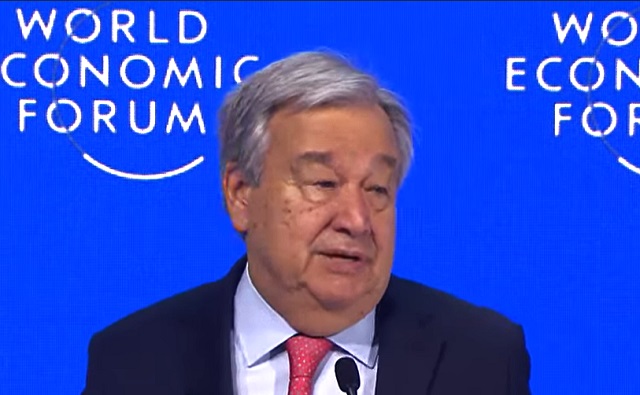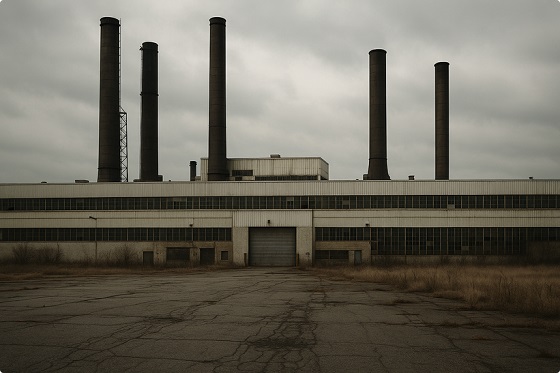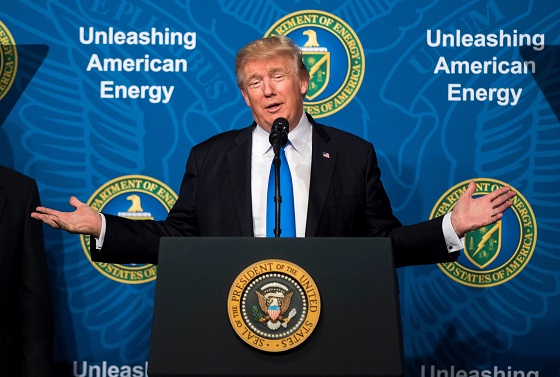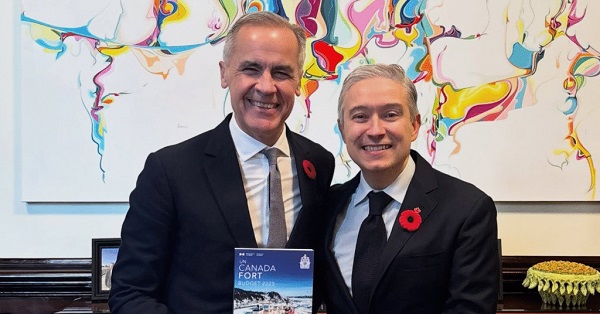Energy
The sudden, newfound support for LNG projects in Canada is truly remarkable.

From Resource Works
The sudden, newfound support for LNG projects in Canada is truly remarkable.
What’s all this? Green-leaning governments, federal and provincial, suddenly speaking in favour of liquefied natural gas (LNG) and other resource development?
It began with British Columbia Premier David Eby telling Bloomberg News that he’s optimistic that LNG Canada’s LNG-for-export plant at Kitimat, BC can be expanded in a way that satisfies its investors but without supercharging the province’s emissions.
This came as LNG Canada was reported continuing to look into possible Phase Two expansion. Such expansion would double the plant’s output of LNG to 14 million tonnes a year.
Industry reports say LNG Canada has been discussing with prime contractors their potential availability down the road. A key, though, is whether and how B.C. can provide enough electrical power.
The LNG Canada plant now is going through a pre-production testing program, and has finished welding on its first “train” (production line). LNG Canada is expected to go into full operation in mid-2025. And Malaysia’s Petronas (a 25% partner) has added three new LNG carriers to its fleet, to gear up for LNG Canada’s launch.
The Eby story noted that he has also thrown his support behind other projects — including hydrogen production and an electric-vehicle battery recycling plant — to create jobs and keep B.C.’s economy growing at a challenging time.
Then came Ottawa’s minister of innovation, science and industry, François-Philippe Champagne, who visited the Haisla Nation in B.C. to support its Cedar LNG project with partner Pembina Pipeline Corp.
Champagne declared: “This is the kind of project we want to see, where there are all the elements supporting attracting investments in British Columbia.”
His government news release said: “This project presents an exciting opportunity for Canada, as it is expected to commercialize one of the lowest-carbon-intensity liquified natural gas (LNG) facilities in the world and represents the largest Indigenous-majority-owned infrastructure project in Canada.”
Champagne went on to tell The Terrace Standard that “We are in active conversations with Pembina and Haisla First Nations. We are saying today that we will support the project, but discussions are still ongoing.’
There had already been reports that Export Development Canada is set to lend Cedar LNG $400-$500 million.
And then came federal minister Jonathan Wilkinson, announcing to the national Energy and Mines Ministers’ Conference in Calgary that Ottawa “will get clean growth projects built faster” by streamlining regulatory processes and moving to “make good approvals faster.”
Wilkinson has long talked, too, of streamlining and speeding up approval processes for resource projects in general, especially for mining for critical minerals. “(We’re) looking at how do we optimise the regulatory and permanent processes so you can take what is a 12- to 15-year process and bring it down to maybe five.”
The Canada Energy Regulator now is inviting input on its plans to improve the efficiency and predictability of project reviews.
All this as Deloitte Canada consultants reported that “the natural gas sector is poised for significant growth, driven by ongoing LNG projects and rising demand for gas-fired electricity generation in Canada.”
And energy giant BP said that under its two new energy ‘scenarios’, world demand for LNG in 2030 grows by 30-40% above 2022 levels, then increases by more than 25% over the subsequent 20 years.
Wilkinson earned pats on the back from some provincial ministers at the Calgary conference, but Alberta’s minister of energy and minerals, Brian Jean, aired concerns over how Ottawa’s new “greenwashing” law would impact the oil and gas sector.
Under it, companies (and individuals) must prove the truth of their public statements on climate benefits of their products or programs, or face potential millions in fines. But the ground rules for this legislation have not yet been announced.
(Jean was not alone. Other critics included CEO Karen Ogen of the First Nations LNG Alliance, who said the new law “could be used as one more tool to discourage resource companies that might seek Indigenous partnerships, and to obstruct Indigenous investment in energy projects, and frustrate Indigenous benefits from resource projects.”)
Wilkinson replied that the Competition Bureau needs to provide information so people understand how the rules apply and what is actionable.
“I think once that is done, this will be, perhaps, a bit of a different conversation. I would expect that the guidance will be something like folks simply have to have a good faith basis to believe what they’re saying. And assuming that is true, I think the sector probably will calm down.”
No pats on the back for Ottawa, though, from the mining industry or the oil-and-gas sector.
Aiming to combat China’s efforts to corner the market in critical minerals, Canada is making it harder for foreign firms to take over big Canadian mining companies. Major mining shares quickly dropped in value.
And Heather Exner-Pirot of the Macdonald-Laurier Institute and special advisor to the Business Council of Canada, says: “We produced less critical minerals last year than we did in 2019. We’re producing less copper, less nickel, less platinum, less cobalt, all these things. And the investment has not picked up; in real dollars it’s almost half of what it was in 2013 . . . and the regulatory system is still a huge barrier to that development.”
On top of that, the petroleum sector has long protested that federal moves to limit oil and gas emissions will, in practice, limit production.
While governments signalled support for LNG, supporters of natural-resource development quickly sent clear messages to governments of all levels.
Calgary-based Canada Action, for one, reminded governments that the oil and gas sector is projected to generate more than in $1.1 trillion in revenue to governments from 2000 through 2032. And that the oil and gas sector supports nearly 500,000 direct and indirect jobs across the country.
Then the industry-supporting Fraser Institute pointed out that business investment in Canada’s extractive sector (mining, quarrying, and oil and gas) has declined substantially since 2014.
“In fact, adjusted for inflation, business investment in the oil and gas sector has declined 52.1 per cent since 2014, falling from $46.6 billion in 2014 to $22.3 billion in 2022. In percentage terms the decline in non-conventional oil extraction was even larger at 71.2 percent, falling from $37.3 billion in 2014 to $10.7 billion in 2022. . . .
“One of the major challenges facing Canadian prosperity are regulatory barriers, particularly in the oil and gas sector.”
Over to government, then, to reduce those barriers.
Following the recent positive moves listed above from two levels of government, there’s an obvious question: Would there happen to be federal and provincial elections in the offing?
Yes: B.C. will hold its next general election on or before October 19. And the feds go to the polls for an election on or before October 20.
Stand by for more promises.
Business
Carney budget doubles down on Trudeau-era policies

From the Fraser Institute
By Kenneth P. Green and Elmira Aliakbari
The Carney government tabled its first budget, which includes major new spending initiatives to promote a so-called “green economy,” and maintains greenhouse gas (GHG)-emission extinction as a central operating principle of Canadian governance.
The budget leaves untouched most of the legislative dampers on Canada’s fossil fuel sector (oil, gas, coal) of the last 10 years, while pouring still more money into theoretically “green” projects such as additional (and speculative new types) of nuclear power, electrical transmission to service “green” energy production, continued tax credits for alternative fuels such as hydrogen, and more. Adding insult to injury, the budget discusses “enhancing” (read: likely increasing) the carbon tax on industrial emitters across Canada, and tightening controls over provinces to ensure they meet new federal tax targets.
Over the past decade, Ottawa introduced numerous regulations to restrict oil and gas development and again accelerate the growth of the green sector. Key initiatives include Ottawa’s arbitrary cap on GHG emissions for the oil and gas sector, which will restrict production; stricter regulations for methane emissions in the oil and gas industry, which will also likely restrict production; “clean electricity” regulations that aim to decarbonize Canada’s electricity generation; Bill C-69 (which introduced subjective ill-defined criteria into the evaluation of energy projects); and Bill C-48, known as the oil tanker ban on the west coast, which limits Canadian exports to Asian and other non-U.S. markets.
At the same time, governments launched a wide range of spending initiatives, tax credits and regulations to promote the green economy, which basically includes industries and technologies that aim to reduce pollution and use cleaner energy sources. Between 2014/15 and 2024/25, federal spending on green initiatives (such as subsidizing renewable power, providing incentives for electric vehicles and charging infrastructure, funding for building retrofits, and support for alternative fuels such as hydrogen, etc.) went from $0.6 billion to $23 billion—a 38-fold increase. Altogether, since 2014, Ottawa and provincial governments in the country’s four largest provinces (Ontario, British Columbia, Quebec and Alberta) have spent and foregone revenues of at least $158 billion to promote the green sector.
Yet, despite the government’s massive spending and heavy regulation to constrain the fossil fuel industry and promote the green sector, the outcomes have been extremely disappointing. In 2014, the green sector accounted for 3.1 per cent of Canada’s economic output, and by 2023, that share had only slightly grown to 3.6 per cent. Put simply, despite massive spending, the sector’s contribution to Canada’s economy has barely changed. In addition, between 2014 and 2023, despite billions in government spending to promote the green sector, only 68,000 new jobs were added in this sector, many of them in already established fields such as waste management and hydroelectric power. The sector’s contribution to national employment remains small, representing only 2 per cent of total jobs in the country.
Not surprisingly, this combination of massive government spending and heavy-handed regulation have contributed to Canada’s economic stagnation in recent years. As documented by our colleagues, Canadian living standards—measured by per-person GDP—were lower in the second quarter of 2025 than six years earlier, suggesting we are poorer today than we were six years ago.
But for Prime Minister Carney, apparently, past failures do not temper future plans, as the budget either reaffirms or expands upon the failed plans of the past decade. No lessons appear to have even been considered, much less learned from past failures.
There had been some hope that Carney’s first budget would include some reflection of how badly the natural resource and energy policies of the Trudeau government have hurt Canada’s economy.
But other than some language obfuscation—“investment” vs. “spending,” “competitiveness” of GHG controls (not economy), and the “green” energy economy vs. the “conventional” energy economy—this is a Trudeau-continuance business-as-usual agenda on steroids. Yes, they will allow some slight deceptive rollbacks to proceed (such as rolling the consumer carbon tax into the industrial carbon tax rather than eliminating it), and may allow still more carbon taxes to render at least one onerous Trudeau-era regulation (the oil and gas cap) to be rendered moot, but that’s stunningly weak tea on policy reform.
The first Carney budget could and likely will, if passed, continue the economic stagnation plaguing Canada. That does not bode well for the future prosperity of Canadians.
Daily Caller
UN Chief Rages Against Dying Of Climate Alarm Light


From the Daily Caller News Foundation
The light of the global climate alarm movement has faded throughout 2025, as even narrative-pushing luminaries like Bill Gates have begun admitting. But that doesn’t mean the bitter clingers to the net-zero by 2050 dogma will go away quietly. No one serves more ably as the poster child of this resistance to reality than U.N. chief Antonio Guterres, who is preparing to host the UN’s annual climate conference, COP30, in Brazil on Nov. 10.
In a speech on Monday, Guterres echoed poet Dylan Thomas’s advice to aging men and women in his famed poem, “Do not go gentle into that good night:”
Do not go gentle into that good night,
Old age should burn and rave at close of day;
Rage, rage against the dying of the light.
Dear Readers:
As a nonprofit, we are dependent on the generosity of our readers.
Please consider making a small donation of any amount here.
Thank you!
Though wise men at their end know dark is right,
Because their words had forked no lightning they
Do not go gentle into that good night.
Seeing that his own words have “forked no lightning,” Guterres raged, raged against the dying of the climate alarm light.
“Governments must arrive at the upcoming COP30 meeting in Brazil with concrete plans to slash their own emissions over the next decade while also delivering climate justice to those on the front lines of a crisis they did little to cause,” Guterres demanded, adding, “Just look at Jamaica.”
Yes, because, as everyone must assuredly know, the Earth has never produced major hurricanes in the past, so it must be the all-powerful climate change bogeyman that produced this major storm at the end of an unusually slow Atlantic hurricane season.
Actually, Guterres’ order to all national governments to arrive in Belem, Brazil outfitted with aspirational plans to meet the net-zero illusion, which everyone knows can and will never be met, helps explain why President Donald Trump will not be sending an official U.S. delegation. Trump has repeatedly made clear – most recently during his September speech before the U.N. General Assembly – that he views the entire climate change agenda as a huge scam. Why waste taxpayer money in pursuit of a fantasy when he’s had so much success pursuing a more productive agenda via direct negotiations with national leaders around the world?
“The Green New Scam would have killed America if President Trump had not been elected to implement his commonsense energy agenda…focused on utilizing the liquid gold under our feet to strengthen our grid stability and drive down costs for American families and businesses,” Taylor Rogers, a White House spokeswoman, said in a statement to the Guardian. “President Trump will not jeopardize our country’s economic and national security to pursue vague climate goals that are killing other countries,” she added.
The Guardian claims that Rogers’s use of the word “scam” refers to the Green New Deal policies pursued by Joe Biden. But that’s only part of it: The President views the entire net-zero project as a global scam designed to support a variety of wealth redistribution schemes and give momentum to the increasingly authoritarian forms of government we currently see cracking down in formerly free democracies like the U.K., Canada, Germany, France, Australia and other western developed nations.
Trump’s focused efforts on reversing vast swaths of Biden’s destructive agenda is undoing 16 years of command-and-control regulatory schemes implemented by the federal government. The resulting elimination of Inflation Reduction Act subsidies is already slowing the growth of the electric vehicles industry and impacting the rise of wind and solar generation as well.
But the impacts are international, too, as developing nations across the world shift direction to be able to do business with the world’s most powerful economy and developed nations in Europe and elsewhere grudgingly strive to remain competitive. Gates provided a clear wake-up call highlighting this global trend with his sudden departure from climate alarmist orthodoxy and its dogmatic narratives with his shift in rhetoric and planned investments laid out in last week’s long blog post.
Guterres, as the titular leader of the climate movement’s center of globalist messaging, sees his perch under assault and responded with a rhetorical effort to reassert his authority. We can expect the secretary general to keep raging as his influence wanes and he is replaced by someone whose own words might fork some lightning.
David Blackmon is an energy writer and consultant based in Texas. He spent 40 years in the oil and gas business, where he specialized in public policy and communications.
-

 Censorship Industrial Complex2 days ago
Censorship Industrial Complex2 days agoHow the UK and Canada Are Leading the West’s Descent into Digital Authoritarianism
-

 Business2 days ago
Business2 days agoCapital Flight Signals No Confidence In Carney’s Agenda
-

 International2 days ago
International2 days agoThe capital of capitalism elects a socialist mayor
-

 Energy1 day ago
Energy1 day agoEby should put up, shut up, or pay up
-

 Business1 day ago
Business1 day agoPulling back the curtain on the Carney government’s first budget
-

 Daily Caller1 day ago
Daily Caller1 day agoUS Eating Canada’s Lunch While Liberals Stall – Trump Admin Announces Record-Shattering Energy Report
-

 Business1 day ago
Business1 day agoThe Liberal budget is a massive FAILURE: Former Liberal Cabinet Member Dan McTeague
-

 Business1 day ago
Business1 day agoCarney’s budget spares tax status of Canadian churches, pro-life groups after backlash







